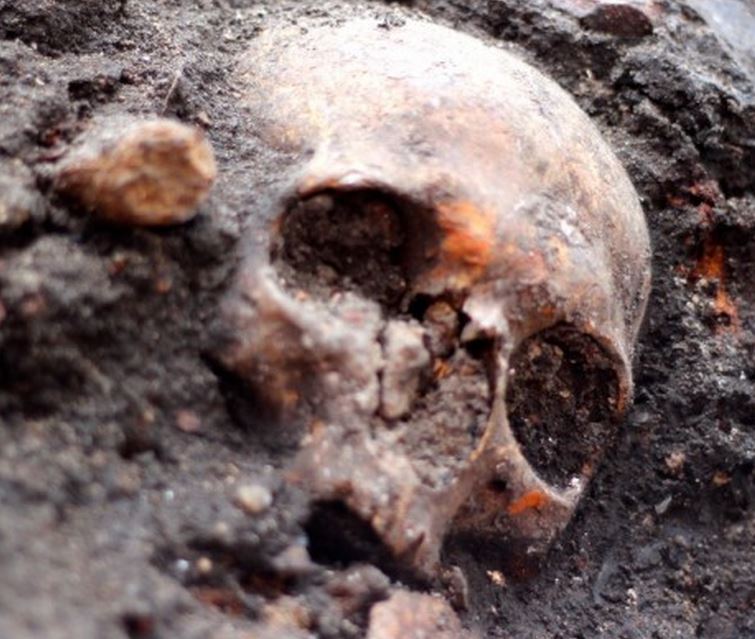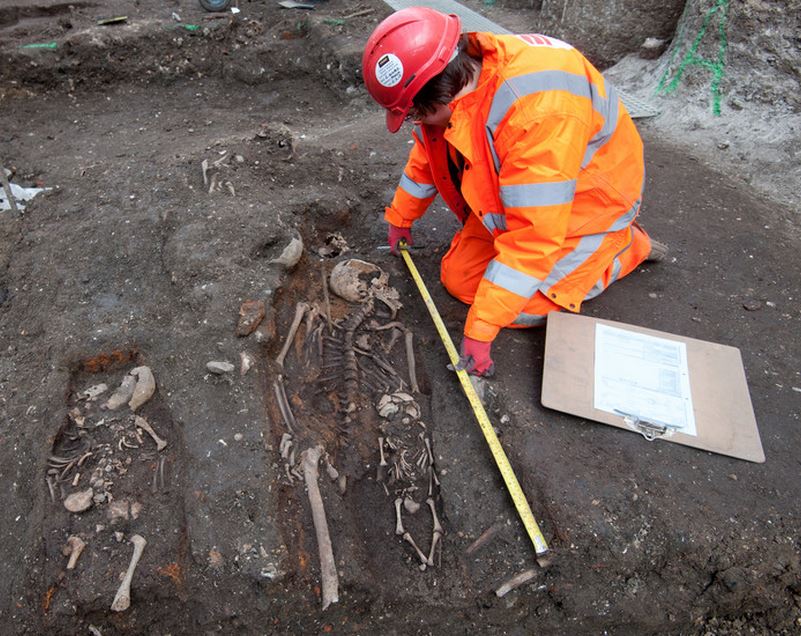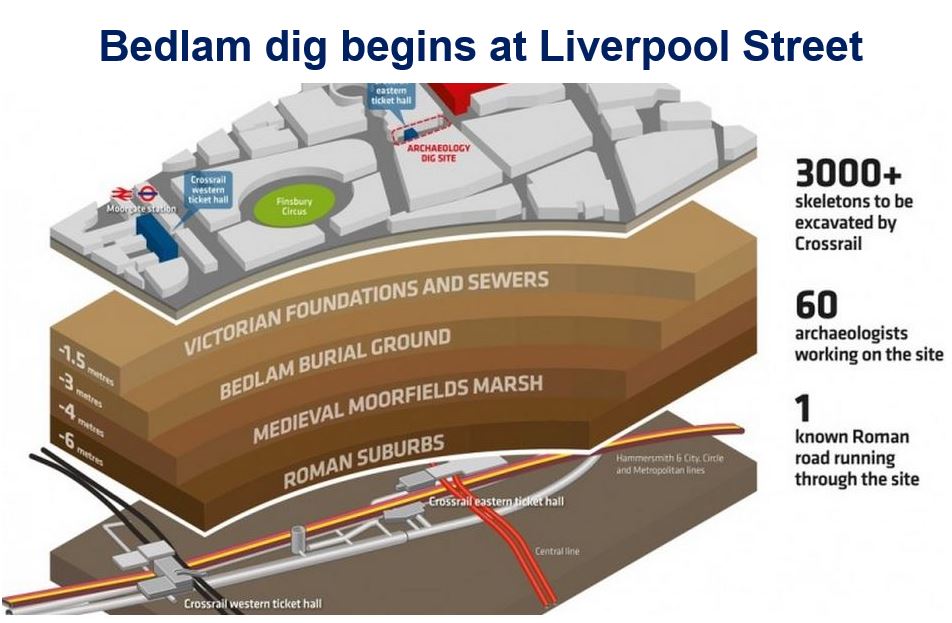Sixty archeologists are excavating about 3,000 skeletons at London’s most valuable 16th and 17th century cemetery site – the Bedlam burial ground at Liverpool Street. They will be working shifts, six days per week.
The Museum of London Archeology (MOLA) is carrying out the excavation on behalf of Crossrail Ltd (CRL), the company building Crossail, a 73 mile (118 km) railway line under construction in London and its surroundings.
The Bedlam burial ground was used as a cemetery from 1569 to at least 1738, spanning the emergence of the British Empire, the civil wars, the Restoration, Shakespeare’s plays, the Great Fire of London, and several plague outbreaks.

After scientists have carried out their tests, the skeletons will be reburied in a consecrated burial ground. (Image: Crossrail)
London’s last Great Plague occurred 350 years ago in 1665. Archeologists are hoping to learn more about the evolution of the plague bacteria strain by carrying out tests on the excavated victims.
Crossrail’s lead archaeologist, Jay Carver, said:
“This excavation presents a unique opportunity to understand the lives and deaths of 16th and 17th century Londoners. The Bedlam burial ground spans a fascinating phase of London’s history, including the transition from the Tudor-period City into cosmopolitan early-modern London.”
“This is probably the first time a sample of this size from this time period has been available for archaeologists to study in London. The Bedlam burial ground was used by a hugely diverse population from right across the social spectrum and from different areas of the City.”
Project Manager from MOLA, Nick Elsden, said:
“Construction for Crossrail is providing rare and exciting opportunities for archaeologists to excavate and study areas of London that would ordinarily be inaccessible, such as under established road-systems.”
“There are up to six metres of archaeology on site, in what is one of the oldest areas of the city, so we stand to learn a great deal.”

Archaeologists expect to complete their work on the site in September 2015. (Image: Crossrail)
The archaeological team says it would also like to learn more about the migration patterns, eating habits, lifestyles, and demography of people living in London at the time.
Osteologists (scientists specialized in bones) at MOLA will carry out test on the excavated skeletons, after which they will be reburied in a consecrated burial ground.
Roman ruins below the burial ground
The excavation will continue for the next four weeks, after which archeologists will collect Roman remains and medieval marsh deposits.
A Roman road runs under the Bedlam burial ground, where archeologists have already found some interesting artefacts, including cremation urns and horseshoes.
They expect to complete their work on the site in September, after which contractor Laing O’Rourke will build the new eastern ticket hall.

There are four layers to dig: 1. Victorian foundations and sewers. 2. Bedlam burial ground. 3. Medieval Moorfields marsh. 4. Roman suburbs. (Image: Crossrail)
Crossrail said in a statement:
“A programme of public events are planned over the coming months that will allow the public to sign up for to find out all about the exciting finds that will be uncovering as we excavate through the layers of London history at Liverpool Street.”
The Bedlam burial ground
Bedlam, located just outside the original City Wall, was London’s first municipal burial ground. It was used by Londoners who did not have enough money to pay for a church burial, or who chose for political or religious reasons to be buried there.
It also served as an ‘overflow’ cemetery when the existing sites could not cope, as occurred in times of plague.
Famous ‘Levellers’ in the 17th century, such as Robert Lockyer and John Lilburne are said to be buried at Bedlam. Levellers formed part of a political movement during the English Civil war that believed in extended suffrage, equality before the law, religious tolerance, and popular sovereignty.
So far, Crossrail has found more than 10,000 artefacts spanning a period of 55 million years of London’s past across more than 40 construction sites. It is the country’s largest archaeological project.
Crossrail video – Crossrail Archaeology
Crossrail Lead Archaeologist Jay Carver gives an insight into the archaeological dig that will be taking place at Liverpool Street.
